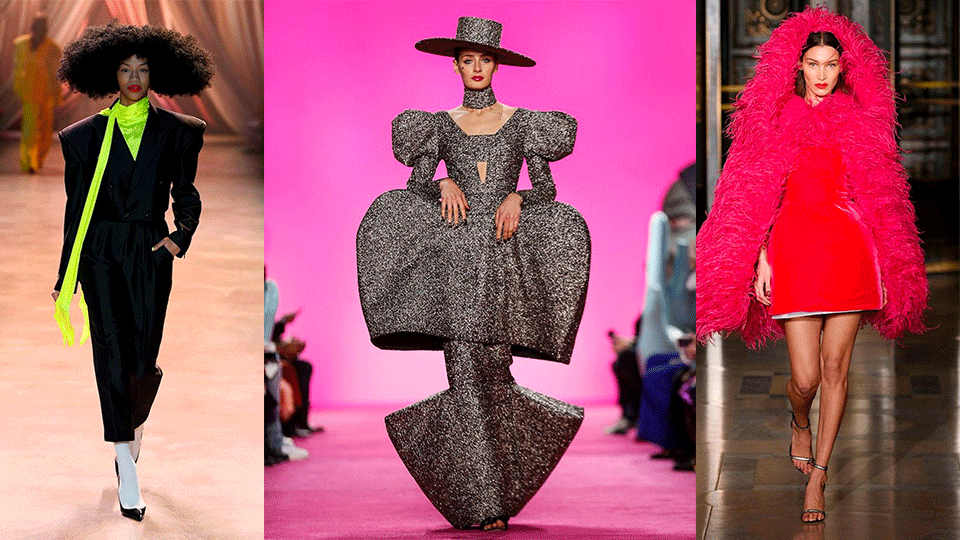- À New Wave to Fashion, À New Way of Living. Download Now on iOS Android Canada SS22
- hello@alahausse.ca
Feeling good, Looking Better; Through Sustainable Fabrics

The Basics and Statistics Behind Textile Recycling
January 10, 2023
The History of Future and Fashion
January 10, 2023
Written by: Martina S
Innovative fabrics are being used to reduce waste and promote sustainability within the fashion industry and it isn’t going unnoticed by large players in the industry.
Sustainable clothing refers to fabrics derived from eco-friendly resources, including sustainably grown fibers, recycled materials, or how it was made. The aim is to minimize the impact on the environment while letting consumers work towards the same goal through their purchases. Orange Fiber is a creation that encourages sustainable design and production values within the fashion industry. Italy is transforming the sustainable fashion landscape, through solving waste and pollution impacts by creating sustainable fabrics from its by-products.



What is Orange Fiber?
Orange Fiber is the first patented material made from citrus juice by-products, this fiber was created by Amberoot with Politecnico di Milano University where the citrus juice is processed to extract the citrus cellulose where it was then sent to Spain to be spun into yarn. It is then sent back to Como, Italy to the fabric producer where the fabric is then sent to fashion brands worldwide. This is a biodegradable fabric that feels soft, silky, and lightweight. The fabric is versatile with the ability to be blended with other fabrics as well to achieve different textures or appearances.
Over 700,000 tons of citrus juice by-products are produced every year in Italy alone. Of which has a significant economic and environmental costs for the disposal of these by-products. What would have been completely thrown away is now a fabric source for high fashion and textiles. Through looking at this as an opportunity, Orange Fiber is now reducing the costs and pollution impact of citrus waste all while providing the fashion industry with a sustainable and innovative material. Lightweight Citrus cellulose yarn can be used in its entirety to make a 100% citrus biodegradable fabric.
Feeling Good, Looking Better
Given the health properties of the citrus fruit, there are natural oils including Vitamin A, C, and E within fabric. As a result of using nanotechnology, it allows these vitamins and oils to remain in the material. Orange Fiber, the company, advises that although these oils are present in the clothes it does not imply that the material is greasy. These components of the material last for about twenty washes. By providing a material that allows consumers to not only look good but feel good from the vitamin concentration; it offers a new opportunity for the high-quality fashion industry. Through wearing these clothes, the body is able to absorb the enriched material offering a unique experience.


Apple Leather
When apples are pressed for juice and solids are left as a by-product known as Pomace, it is a waste to throw it away as organic waste. Pomace contains a high cellulose content, which makes it attractive material to upcycle into new fabrics. This practice of transforming pomace into leather originated in Bolzano Italy. The apple waste is first reduced into a powder, once processed is sent to a factory in Florence where the material is combined with polyurethane and coated onto a cotton and polyester canvas. This results in a durable and soft fabric.
Apple leather offers the fashion industry an opportunity to maximize apple waste as it is a completely renewable resource. By leveraging this, it significantly reduces the carbon footprint whereas faux leather is made from 100% fossil fuels. As well, this resolving the issue of apple waste which would have ended up in a landfill or burned for fuel. This material is half synthetic and half biobased. Some up-and-coming brands that use Apple Leather include: Veerah, Allegorie, Samara, Good Guys Don’t Wear Leather, and Komrads.
Fashion Companies & their Sustainability Edge
Brands have been trying to promote sustainable innovations through various awards and contests. H&M created its own contest in 2015, Global Change award to recognize innovative start-ups in the industry so the upcoming brand could be recognized, and their story could be shared. Complementary to this initiative, H&M launched Innovation Stories in 2021 to primarily focus on sharing stories on new innovative and sustainable materials. It promotes the use of new materials and production practices. Highlighting Orange Skin, Wine Leather, Cactus, Mushroom-funghi leather, and Apple Leather. H&M’s mission through these initiatives is to transform the fashion industry into a planet positive industry. In order for a brand to qualify land, water, oceans, climate, and biodiversity must be addressed through the solution.
The fashion industry is promoting sustainable practices like never before through awards and recognition. As well, through using a more sustainable fabric it creates a niche and competitive advantage for those that are first movers in this industry. Fruit by products as a material allows brands to work towards minimizing the waste created within the food industry and improve practices in the fashion industry. Who knows what fruit we will be wearing next and if this will be used by your favourite clothing brand?

À New Wave to Fashion. À New Way of Living.
Your First and Last Sustainable AI and Social Powered P2P/B2C Multifunctional Ecosystem (BUY/SELL/RENT/LEND/ SWAP/GIFT), for Me and You.
Apple: https://apple.co/3F8EgcJ
Android: https://bit.ly/3f7jEY3
Via ÀLA.HAUSSE’s Multi-functional and Multi-purposeful Fashion Ecosystem- BUY/SELL/RENT/LEND mobile application, INDIVIDUALS & brands ( BETA) are encouraged to REBUY, RESELL, REUSE and UP-CYCLE their personal “Clossets” aka Clothing Assets. Through this consumerism habit shift we slow down the urgency on fashion carbon footprint, aiding sustainability as a whole.
Launching NOW on iOS Android Canada
Give me a read: shorturl.at/rIMT8
More stories on www.alahausse.ca, Medium & Hackernoon. Follow & Tag @ala.hausse
#ALAHAUSSE #WEARYOURPURPOSE #HAUSSEPEOPLE
References:
- https://textilevaluechain.in/in-depth-analysis/orange-fiber-the-fabric-from-fruit/
- https://www.sustainably-chic.com/blog/what-is-apple-leather








